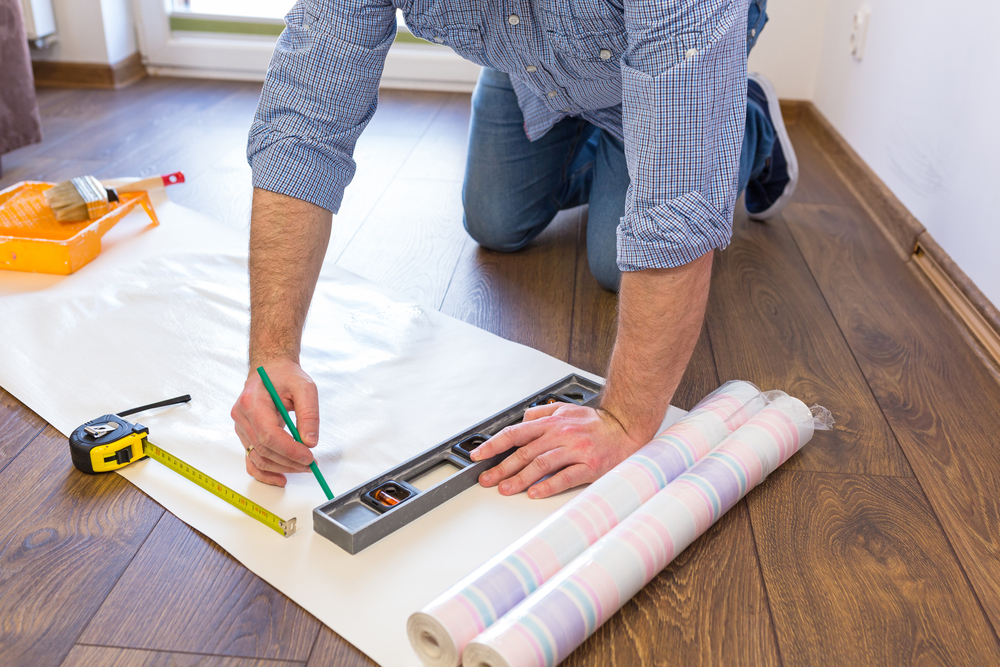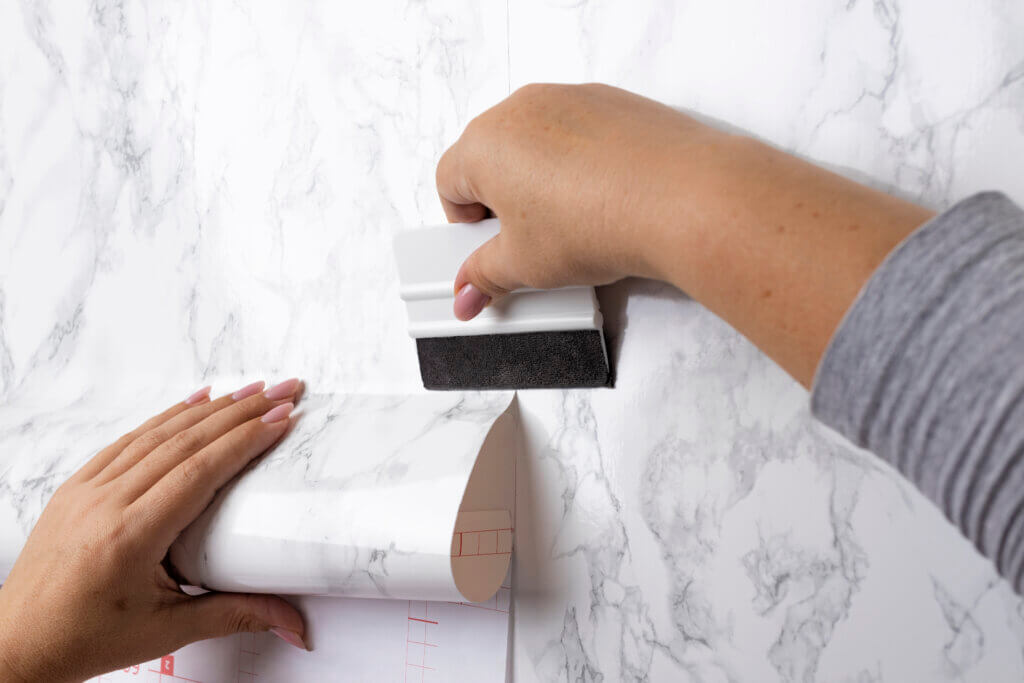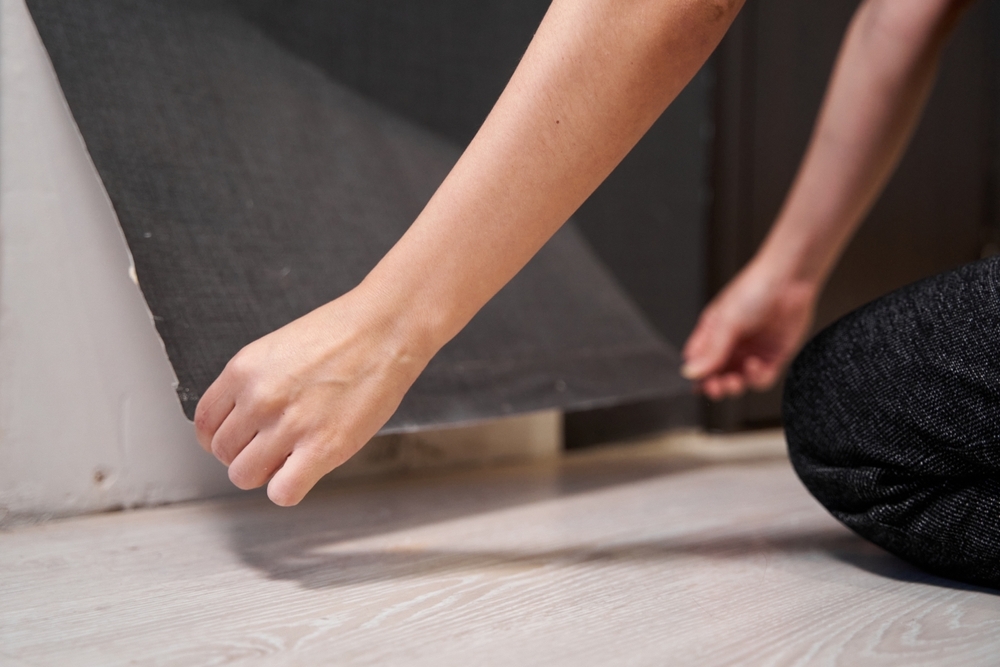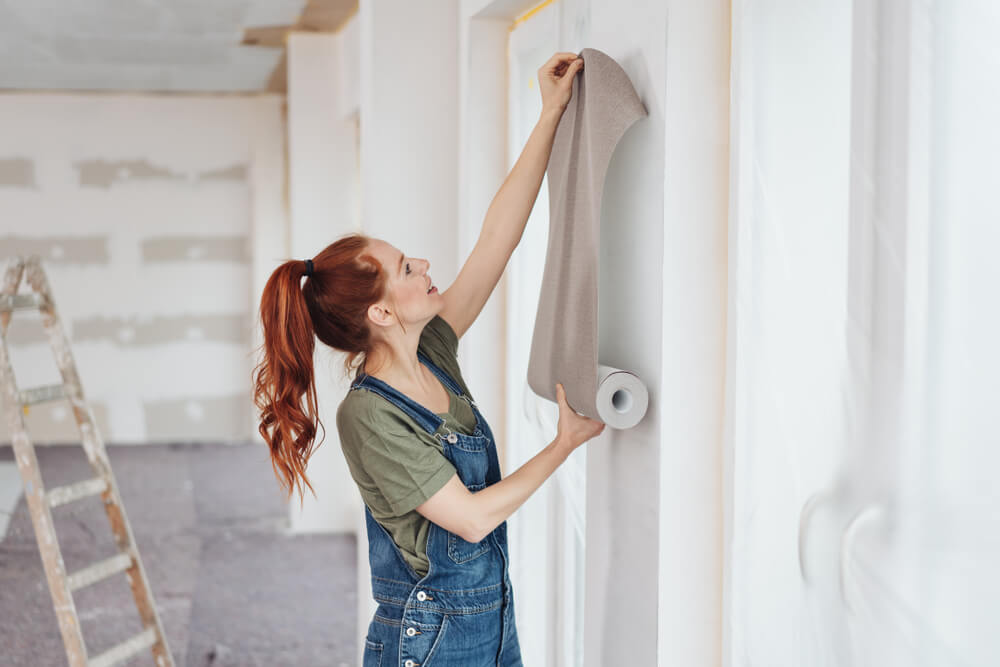Are you tired of staring at grey walls or dealing with the struggle of traditional wallpaper installation? Peel and stick wallpaper can be the solution for you! Whether you’re a renter looking for a temporary solution or a homeowner seeking a quick refresh, this type of wallpaper offers a hassle-free way to transform your space. In this comprehensive guide, we’ll dive into everything you need to know about it, from its benefits to installation tips, where to find it, potential downsides, and more.
What is Peel and Stick Wallpaper?
Peel and stick wallpaper, also known as self-adhesive or removable wallpaper, is a versatile alternative to traditional wallpaper. Unlike the traditional one that requires paste and water, this type of wallpaper comes with a pre-applied adhesive backing. This innovative design allows you to simply peel off the backing and stick the wallpaper directly onto your wall, making it incredibly easy to install and remove.
Benefits of Peel and Stick Wallpaper:
Easy Installation
This type of wallpaper is similar to a sticker or contact paper that you use to apply to your school’s notebook but for your walls. You can achieve a professional-looking finish in no time and with less effort. Simply peel off the backing and stick it to your wall – it’s that easy!
Removable and Reusable
One of the biggest advantages of stick and peel wallpaper is its removability. If you decide to change up your decor or move to a new space, you can easily remove the wallpaper without damaging your walls. Plus, many of them are reusable, allowing you to save them for future use.
Versatility
They come in a wide range of designs, patterns, and textures, making it easy to find the perfect style for your space. Whether you prefer bold and vibrant patterns or subtle textures, there’s a peel and stick wallpaper to suit every taste and aesthetic.
Renter-Friendly
Since this kind of wallpaper is removable and doesn’t damage walls, it’s an ideal option for renters who want to personalize their space without risking their security deposit. When it’s time to move out, simply peel it off and leave your walls in flawless condition.
Cost-Effective
Stick and peel wallpaper can also be a budget-friendly alternative to traditional wallpaper and wall decals. You can achieve an expensive look without breaking the bank, making it perfect for DIY enthusiasts and budget-conscious homeowners.
Potential Downsides of Peel and Stick Wallpaper:
Adhesion Issues
While peel and stick wallpaper is designed to adhere to walls easily, factors such as poor wall preparation or incompatible surfaces can affect adhesion. In some cases, the wallpaper may not stick properly or may begin to peel over time, leading to frustration and the need for reapplication.
Limited Durability
It may not be as durable as traditional wallpaper, especially in high-traffic areas or spaces exposed to moisture. Over time, the adhesive backing may weaken, leading to peeling or lifting at the edges. Also, the surface of the wallpaper may be more predisposed to scratches or damage than traditional wallpaper.
Removal Challenges
Depending on factors such as wall texture and the quality of the adhesive, the wallpaper may leave residue behind or damage the wall surface upon removal. Proper techniques and tools may be required to minimize damage and ensure a clean removal. Also, choosing a good quality option might help avoiding this issue.
Limited Reusability
While some peel and stick wallpapers are advertised as reusable, repeated repositioning and removal may diminish their adhesive properties over time. Also, certain designs or patterns may be more inclined to damage or distortion with repeated use, limiting their reusability or make them non-reusable at all.
Cost Considerations
Although wallpaper that peels and sticks might be seen as a budget-friendly alternative to traditional one, costs can vary depending on factors such as brand, design, and quality. In some cases, high-quality ones may be comparable in price to traditional wallpaper, leading to potential cost considerations for larger projects.
Finding the Best Peel and Stick Wallpaper
Now that you know the pros and cons, it’s time to learn how to choose the best one for your project. Here are some factors to consider when selecting the perfect wallpaper for your space:
Quality and Durability
Look for a wallpaper made from high-quality materials that are durable and long-lasting. Opt for vinyl or polyester-based, as they tend to be more durable and resistant to tears, creases, and fading.
Ease to Apply
Select one that is easy to install and reposition if needed. Look for products with a strong adhesive backing that adheres well to walls without causing air bubbles or wrinkles during installation.
Ease to Remove
Ensure that the one you choose is removable and won’t cause any damage to your walls. Look for wallpapers labelled as “removable” or “repositionable” to make the removal process easier when it’s time for a change.
Customer Reviews and Ratings
Like any other product, read reviews and ratings from other customers to get insights into the quality, performance, and ease of use of different peel and stick wallpaper brands and products. Look for products with positive reviews and high ratings for peace of mind.
Some popular brands and options for stick and peel wallpaper include:
Tempaper: Known for its wide range of stylish designs and high-quality materials.
RoomMates: Offers a variety of peel and stick wallpaper designs, including licensed designs featuring popular characters and brands.
NuWallpaper: Known for its easy-to-install stick and peel wallpaper in a range of patterns and colors.
WallPops: Offers it in a variety of trendy designs, including geometric patterns, floral prints, and textured finishes.
Chasing Paper: Known for its removable wallpaper in bold, modern designs and customizable options.
How Can I Calculate How Much Peel and Stick Wallpaper is Needed?
Before starting your project, it’s essential to determine how much product you’ll need to cover your walls effectively. Here’s a simple method to calculate the amount of peel and stick wallpaper needed for your project:

Measure Your Walls
Begin by measuring the height and width of each wall you plan to cover with wallpaper. Use a tape measure to get accurate measurements from floor to ceiling and from corner to corner. Round up to the nearest foot or inch to ensure you have enough for your project.
Calculate the Total Square Footage
Once you have the measurements for each wall, multiply the height of each wall by its width to calculate the square footage. For example, if a wall is 10 feet high and 12 feet wide, the total square footage would be 120 square feet (10 ft x 12 ft = 120 sq ft).
Account for Repeat Patterns
If your chosen peel and stick wallpaper has a repeat pattern, you’ll need to account for this when calculating the amount needed. Measure the pattern repeat length (the distance between identical points in the pattern) and add it to the width of the wallpaper roll. Divide the total square footage of your walls by the adjusted width of the wallpaper to determine the number of rolls needed.
Add Extra for Mistakes and Trim
It’s always a good idea to add a bit of extra wallpaper to your calculations to account for mistakes, trimming, and pattern alignment. Adding 10-15% to your total square footage is a common rule of thumb to ensure you have enough wallpaper to complete your project without running short.
Consider the Direction of the Application
Depending on the pattern of your wallpaper and the layout of your room, you may need to adjust your calculations to ensure that the pattern aligns correctly when applied to the walls. For example, if your wallpaper has a vertical pattern, you may need to account for extra waste when matching the pattern at corners or seams.
Calculation Illustrated
Let’s say you’re redecorating a room with stick and peel wallpaper, and you want to decorate 2 walls with the same wallpaper. For illustrative purposes, let’s imagine the walls have different measurements:
Wall 1: 10 feet high and 12 feet wide.
Wall 2: 10 feet high and 15 feet wide.
- Measure Your Walls: Calculate the square footage for each wall:
- Wall 1: 10 ft x 12 ft = 120 sq ft.
- Wall 2: 10 ft x 15 ft = 150 sq ft.
- Find the Total Square Footage:
Total Sq Ft = Wall 1 sq ft. + Wall 2 sq ft.
Total Sq Ft = 120 sq ft + 150 sq ft = 270 sq ft.
- Adjust for Repeat Patterns
Assume the wallpaper is 20 inches wide with a 24-inch repeat pattern.
Adjusted width = 20 inches + 24 inches = 44 inches or 3.67 feet.
Now, we have to find how many rolls of wallpaper you’ll need:
Number of rolls needed = Total Sq Ft. ÷ Adjusted Width.
Number of rolls needed = 270 sq ft ÷ 3.67 ft ≈ 73 rolls.
- Account for Extra:
Add 10-15% for waste and trimming. In this example, we’ll calculate it considering 15% (0.15)
Additional = Total Sq Ft x 0.15
Additional = 270 sq ft x 0.15 = 40.5 sq ft.
Total with extra = 270 sq ft + 40.5 sq ft = 310.5 sq ft.
Number of rolls needed = 310.5 sq ft ÷ 3.67 ft ≈ 84 rolls.
You’d need approximately 73 rolls without extra material or 84 rolls with extra to cover both walls.
How to Apply Peel and Stick Wallpaper

Now, that you already bought the right amount of wallpaper. Is time to understand how to install it! Here’s a step-by-step guide to help you get started:
- Prepare Your Walls: Before applying the peel and stick wallpaper, ensure that your walls are clean, smooth, and free of dust or debris. Wipe down the walls with a damp cloth and allow them to dry completely.
- Measure and Cut: Measure the height and width of your walls and use those measurements to cut the wallpaper accordingly, adding a few inches to allow for trimming.
- Peel Off the Backing: Carefully peel off a small portion of the backing from the top of the wallpaper, exposing the adhesive side.
- Position and Smooth: Align the top of the wallpaper with the top of your wall and slowly smooth it down, working from top to bottom and using a wallpaper smoother or squeegee to remove any air bubbles.
- Trim Excess: Once the wallpaper is fully adhered to the wall, use a sharp utility knife or scissors to trim any excess material from the edges and corners.
- Repeat: Continue applying strips of wallpaper in the same manner, ensuring that each strip is properly aligned with the previous one until the entire wall is covered. If you’re installing a wallpaper with a pattern, make sure the drawing is also aligned.
- Finishing Touches: Once the wallpaper is installed, go over the entire surface with a wallpaper smoother to ensure a seamless finish.
Where to Buy Peel and Stick Wallpaper in Canada?
Find below a list of Canadian stores where you can find peel and stick wallpaper for sale:
- Home Depot
- Walmart Canada
- Canadian Tire
- Wayfair Canada
- Amazon.ca
- Lowes Canada
- Etsy
- Urban Barn
- Canadian Wall Decor
- HomeSense
You can also check what’s the closest unit near you, and if you want to be cautious, visit to verify the color and pattern in person. Sometimes, those elements can change a bit because of the light and brightness of your computer screen. Also, keep an eye out for sales, you can find a cheap stick and peel wallpaper and save money on your project.
How to Remove Peel and Stick Wallpaper:

If you’re moving, or want to be ready for that scenario, we also got your back! Follow these steps to safely remove stick and peel wallpaper from your walls:
- Prepare the Area: Clear the room of furniture and other obstacles to provide easy access to the walls. Lay down a drop cloth or old towels to protect the floor from any adhesive residue or debris.
- Start at the Edges: Begin by gently peeling back a corner or edge of the wallpaper using your fingers or a putty knife. Slowly pull the wallpaper away from the wall at a 45-degree angle, being careful not to tear or damage the underlying surface.
- Use Heat (Optional): If the wallpaper is stubborn or has been in place for a long time, you can use a hairdryer or heat gun to soften the adhesive. Hold the heat source a few inches away from the wallpaper and move it back and forth in a sweeping motion to warm the adhesive. This will make it easier to peel off the wallpaper.
- Remove Glue Residue: After peeling off the wallpaper, you may notice leftover residue on the wall. To remove it, dampen a sponge or cloth with warm, soapy water and gently scrub the affected areas. For stubborn ones, you can use a commercial adhesive remover or a mixture of equal parts vinegar and water.
- Clean the Walls: Once all the residue has been removed, wipe down the walls with a clean, damp cloth. Allow the walls to dry completely before applying any new wallpaper or paint.
- Inspect for Damage: After removing the wallpaper, inspect the walls for any damage or imperfections. Patch any holes or gouges with spackle or joint compound and sand them smooth before repainting or applying new wallpaper.
Removing wallpaper might be time-consuming and sometimes stressful if it’s your first time doing it. Remember to take your time, and be patient with the process. If DIY is not for you, Homestars has a lot of pros that can help you with that!
HomeStars Can Help with Professional Installation
If you’re not confident in your DIY skills or prefer to leave the installation to the experts, HomeStars can help you find reputable companies that offer professional installation and removal services for all kinds of home renovation.
HomeStars is Canada’s largest and most trusted platform for connecting homeowners with top-rated home service professionals in Canada. Whether you’re looking for painters, contractors, or wallpaper installers, we make it easy to find reliable professionals near you.
